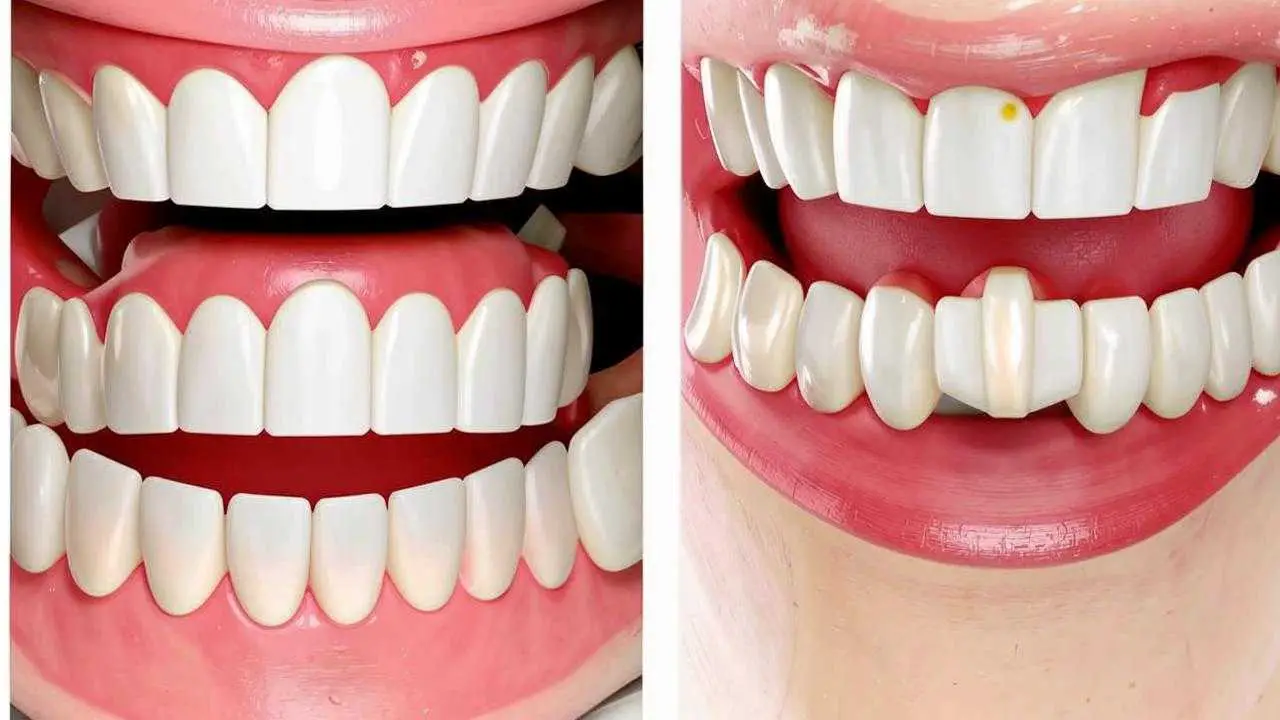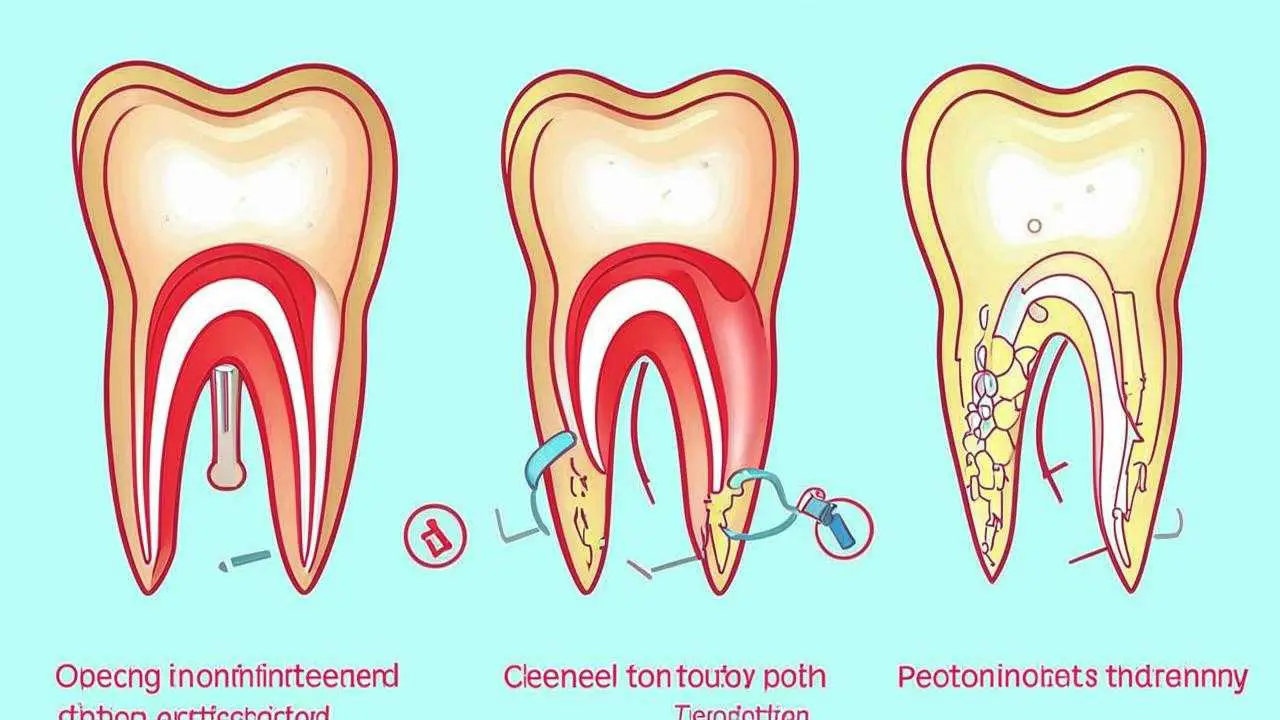A tooth has chipped off. This happens as a result of a blow from a fall, an accident, an occupation of a sort. But this list of reasons why a part of the tooth broke off is not limited to this. The list includes:
- Harmful habits
Those who like to chew on seeds, nuts, breadcrumbs and their nails have a higher risk of damage.
- Improper placement of the post inside the canal
The tooth is restored with a post only if no more than 40% of the crown part is damaged. In case of severe damage, inlays are used. But not always the dentist wants to bother with the manufacture of microprostheses. He inserts a post, fixing it with filling material. Such a construction does not withstand chewing and does not last long. The tooth wall breaks off.
- Injury caused by improper occlusion
Occlusion is the position (contact) of the teeth when they come together. An improper bite (congenital or formed by an incorrect denture) leads to too much stress on the individual teeth. They cannot withstand and chipping of the tooth occurs.
- Complications of non-carious diseases
Fluorosis, hypoplasia, tumors and cysts lead to demineralization of hard tissue. A chipped tooth is not uncommon in these diseases.
- Orthodontic treatment
Braces can also trigger demineralization, even if they are fitted correctly. This often ends in chipping and cracking. Improperly fitted structures cause traumatic damage to the teeth, up to and including fractures.
What to do if a tooth breaks
It is clear that if a tooth is broken under the root, the patient will immediately go to the doctor, but do not think that small chips and cracks can wait. The sharp edge scratches the tongue, cheek on the inside and can cause traumatic stomatitis. Cracks in the enamel deepen and lead to tooth hypersensitivity. Chipping of any tooth affects the distribution of chewing load. On the retained teeth it increases significantly, and this threatens additional trauma, now these units.
Violation of the integrity of the tooth opens the way to the internal tissues for pathogenic bacteria. Minor trauma can end in tooth decay, pulpitis (inflammation of the pulp), periodontitis (inflammation of the tissues around the root), and eventually tooth loss. Therefore, a visit to the dentist is the first thing to do.
Algorithm of actions before a doctor’s appointment
- If the crown has broken off, it is better to find it, wash it, put it in saline solution, milk or just boiled water and take it with you to the doctor. The same is done if only the tip of the tooth is lost. The doctor can glue it back on and place the crown on a post.
- Rinse your mouth with any disinfectant solution or just boiled water.
- To relieve pain, drink an anesthetic. Avoid painkillers that contain aspirin. It thins the blood, which can make treatment more difficult.
What kind of help will be provided in the clinic
First of all, the dentist will make a diagnosis. The dentist will examine the oral cavity and take an X-ray. It will show
- how deep the fracture is;
- whether the root is involved;
- whether or not the soft tissue has been traumatized;
- the condition of the canals.
Treatment will be carried out depending on the defect.
Chipped and cracked enamel
The easiest degree of damage. Teeth react to irritants, whining when eating. Restoration is carried out with a filling material, before this, the corners and sharp edges are ground off. According to indications, veneers are placed on the damaged enamel. They are made either from composite, covering the surface layer by layer, or from ceramic. Ceramic veneers are made from individual impressions in a dental laboratory. They are more expensive, but last longer and retain their attractive appearance for years.
Some patients believe that back teeth do not need to be treated, they are not visible anyway. But enamel damage is a gateway for pathogens. To prevent serious disease, enamel must be restored.
Loss of part of the tooth
If the front tooth has chipped off, it will be restored with composite material. These teeth look natural and can last for many years. When chips and cracks are very noticeable, the tooth will be replaced with a veneer or it will be ground down and a crown will be placed. If part of the front tooth is broken, ceramic restorations will mask the problem so that others will not realize that the crown is artificial. They mimic tooth enamel as closely as possible.
If the wall of the chewing tooth has broken off, veneers will not help. It is necessary to use a post or a dental inlay (if half or more of the tooth has chipped off). A post (a fiberglass post) is inserted into the canal. It provides stability of the tooth, and for its protection and aesthetic purposes, a crown is placed on top. Inlay prosthetics require impressions to be taken. Inlays are made in a dental laboratory. The root end is inserted into the root canal, and the crown part is placed on top of the denture.
A tooth with a filling has broken off
The doctor assesses the condition of the canal by X-ray. If the canals are well filled, then immediately proceed to prosthetics or augmentation. If the canals are poorly sealed, an inflammatory process can begin there, so before the build-up, endodontic treatment is carried out – the canals are re-treated, inflammation is eliminated, and then the tooth is restored.
Broken tooth crown
When the enamel is fractured, patients complain that the sharp edge hurts the cheek or lip, but there is no pain. The dentist grinds off the sharp edge and restores the tooth with composite.
A fracture of the crown (dentin) is most often caused by trauma and is not without pain. The fracture can run along the tooth or break it in half.
Treatment depends on whether or not the pulp (nerve) is involved.
If the fracture does not involve the pulp, a calcium hydroxide spacer is placed in the pulp chamber and a temporary filling is placed. Observe how the pulp behaves, whether there is pain syndrome, whether the nerve-vascular bundle has retained its viability. With a favorable development of events, the temporary filling is replaced by a permanent one. Half a tooth is augmented with composite, in case of large destructions a veneer or crown is applied.
If the tooth in the gum is broken, then most often it means that the pulp is exposed. In such cases, the time of treatment and the age of the patient influence the treatment plan and its outcome. For unformed roots in children, direct pulp therapy with a calcium-containing spacer is performed. The earlier the patient is seen (first 24 hours), the more likely it is that the pulp will be saved before necrosis sets in. When incisors are fractured, or when a molar tooth is broken and hurts, it is important for children to get to the doctor as soon as possible. The pulp can be saved, the tooth will remain alive, there will still be tissue metabolism, normal blood supply. This is important for the formation of permanent roots.
In cases of late treatment, treatment begins with the removal of mobile fragments, pulp amputation. Then isolate the canals with gutta-percha. Prosthetics are carried out inlay and crown.
In case of wisdom teeth fractures, they are most often simply removed.
In adults, the exposed pulp is removed immediately, then fill the canals and restore the crown part.
In case of a complete fracture of the crown (the tooth broke under the gum, but the root remains), it is possible to use it with seating on a post. In cases where the natural crown is not preserved, prosthetics are carried out on a stump inlay.
Broken root
The most difficult of the injuries. Restoring a chipped tooth is easy enough, putting the root fragments together is much more difficult. First, the pulp is checked for viability. To do this, electrical and temperature tests are performed. If the nerve reacts to stimuli, the root fragments are put together like a jigsaw puzzle. A splint is then applied to ensure immobility. The patient wears the splint for approximately 3 months, with follow-up checks after 1 and 2 months. After that, the debris is checked for mobility. If they move, the splint is reinserted. In the immobile state, a mineralized joint is formed between the fragments and the root can perform its functions.
If the pulp is dead, the tooth is extracted and then replaced with a denture or implant.
Fracture after dentures
The reason that the tooth under the crown has broken may be that:
- the tooth has been subjected to excessive stress;
- the preparation before the denture was done poorly;
- the treatment before placing the crown was incorrect;
- the hard tissue has been eaten away by decay, the tooth under the restoration is rotten.
Treatment is based on diagnosis. If the tooth roots are intact, the canals are re-treated and then the tooth is replaced with a dental inlay (if the tooth is half or more decayed). In the case when the root is inflamed, the pathological process has gone far, necrosis of the tissue has begun, the tooth is extracted. Then implantation is carried out or a bridge prosthesis is installed.
In bridge prosthetics can not stop the loss of bone tissue, neighboring teeth have to be trimmed, before that, the nerves (pulp) are removed from them. Such units do not receive mineral substances, become brittle, and quickly deteriorate. A depulped tooth is considered dead.
The implant functions as a natural root, fully restores chewing function, prevents bone atrophy.
Conclusions
- Restoration is possible if the upper tooth, lower tooth, both anterior and lateral, has chipped off;
- mineralization, composite blocking, augmentation, crown on post, inlay and onlays are used for restoration;
- if the root is intact, the tooth can be restored even if the crown part has fractured at the base;
- root fracture is treatable if the pulp is intact;
- in cases where the tooth cannot be saved, it is extracted, followed by implantation or a bridge;
- the implant performs all the functions of a natural tooth, prevents bone atrophy;
- the expanded tooth does not differ from others, looks natural.




